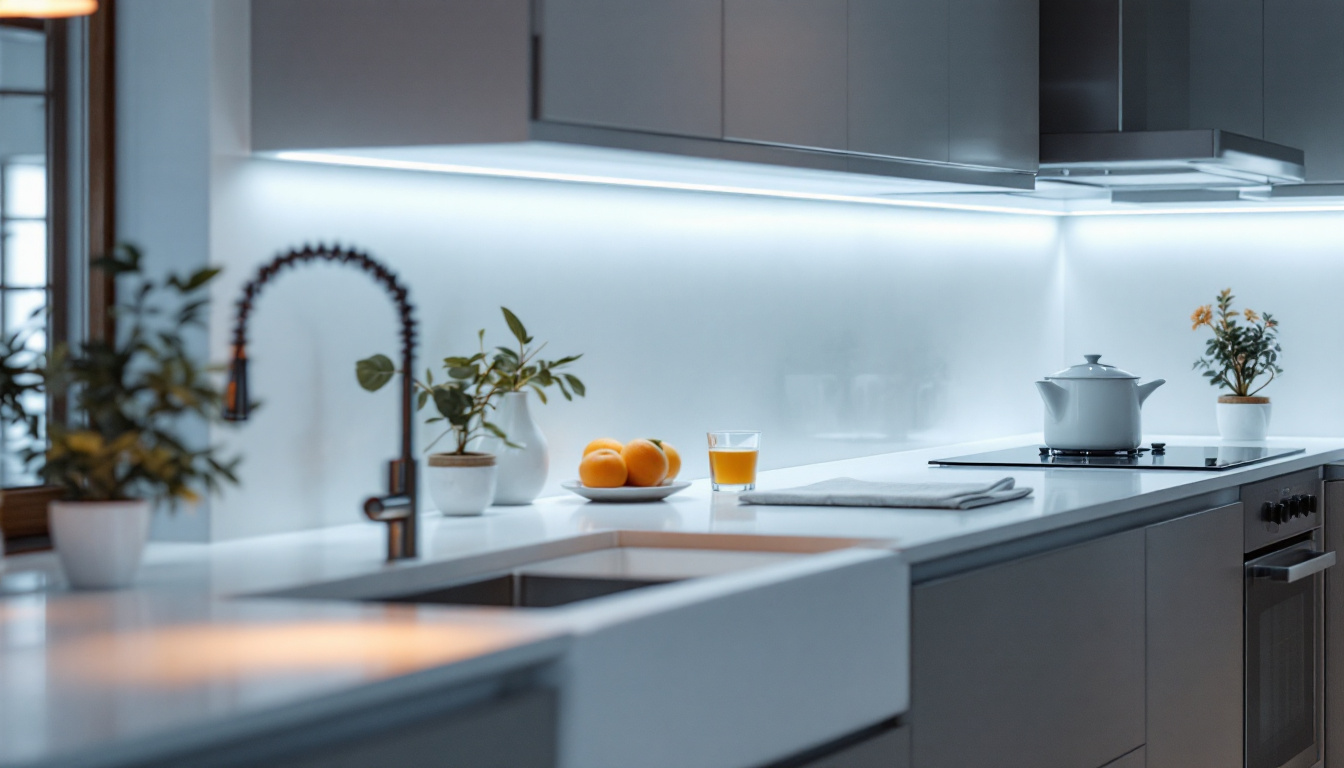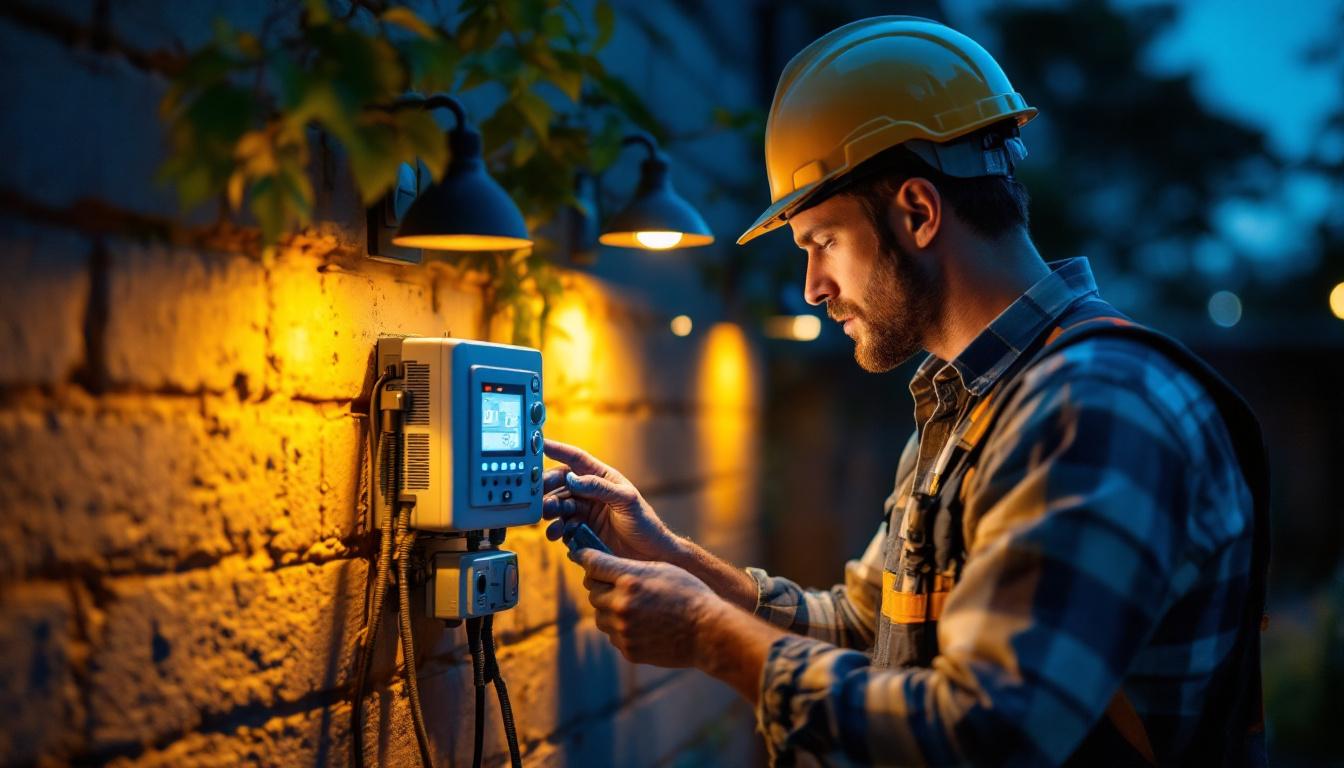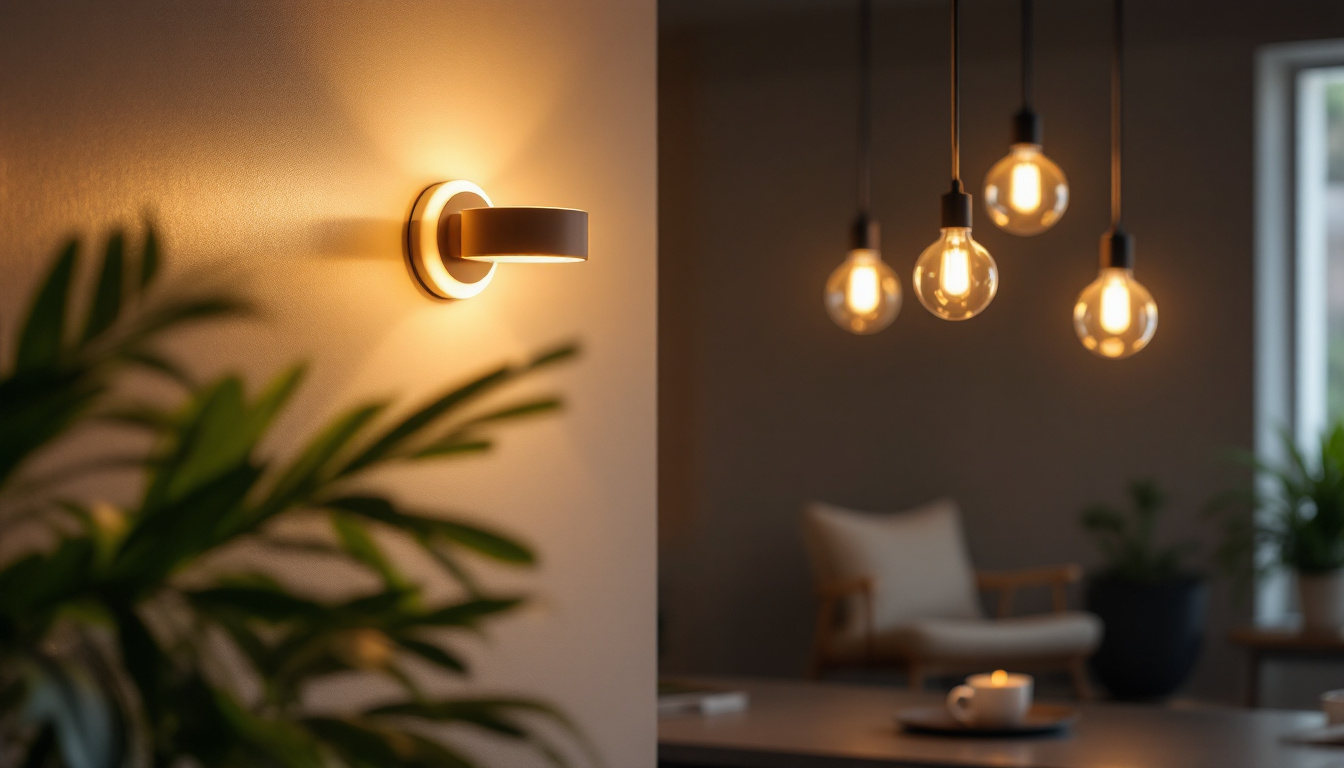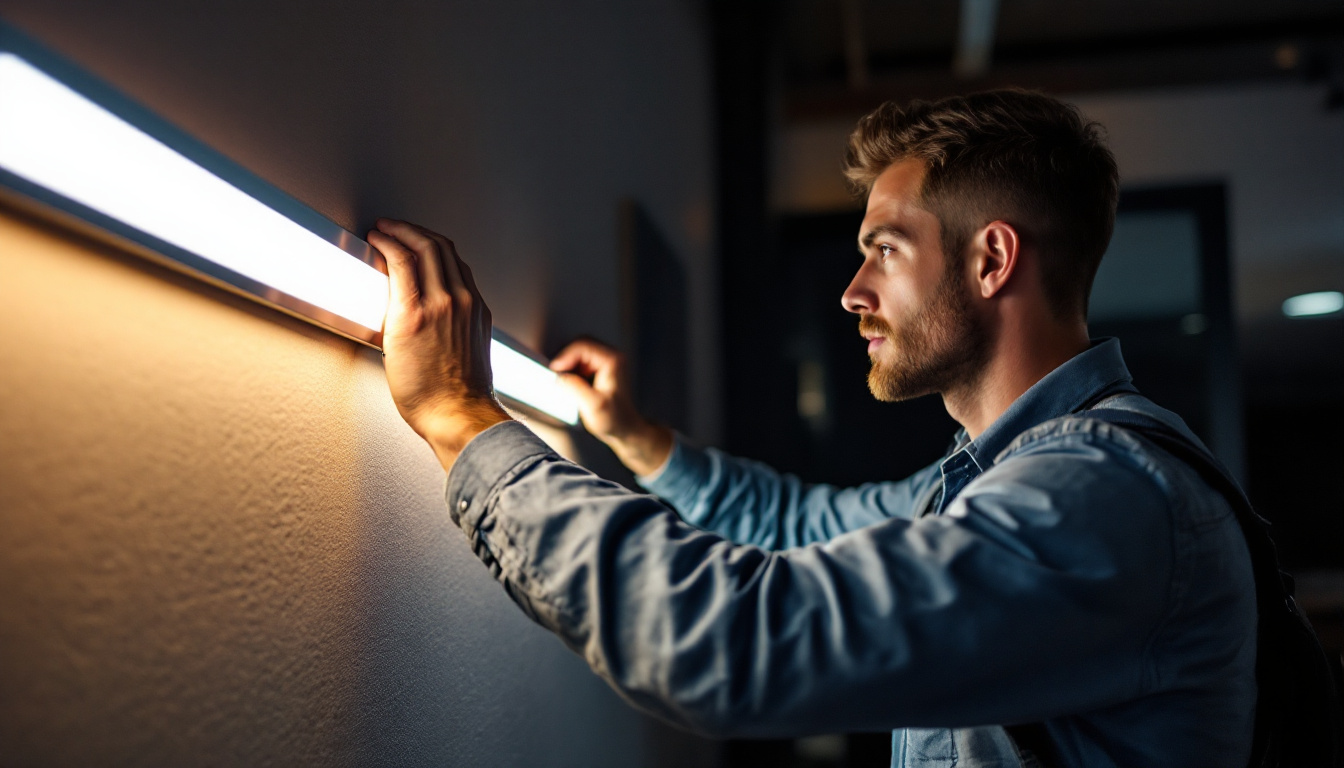
under cabinet motion lighting has become an essential element in modern kitchen and workspace design. As lighting contractors, understanding the various aspects of this technology can enhance the services offered and improve customer satisfaction. This article delves into the critical points that contractors need to consider when integrating under cabinet motion lighting into their projects.
Under cabinet motion lighting serves both functional and aesthetic purposes. It provides illumination where it is most needed while also enhancing the overall ambiance of a space. These lights are typically installed beneath cabinets in kitchens, workspaces, and even in some retail environments, making them a versatile choice for contractors. The strategic placement of these lights can dramatically transform the usability of a space, allowing for better visibility during food preparation or while working on intricate tasks, thereby improving overall efficiency.
Additionally, under cabinet motion lighting can create a warm and inviting atmosphere, especially in kitchens where family and friends gather. By casting a soft glow, these lights can highlight countertops and decorative elements, making the environment more welcoming. The aesthetic appeal combined with practicality makes under cabinet motion lighting an essential feature in modern design.
There are several types of under cabinet motion lighting available, each with its unique features and benefits. The most common types include LED strip lights, puck lights, and linear fixtures. Understanding these types can help contractors make informed recommendations to their clients. Each type not only varies in design but also in functionality, catering to different needs and preferences.
LED strip lights are popular for their flexibility and ease of installation. They can be cut to fit specific lengths and are often adhesive-backed, making them easy to apply. This adaptability allows for creative installations that can follow the contours of cabinets or even highlight architectural features. Puck lights, on the other hand, provide a more focused beam of light and can be installed in a variety of configurations, making them ideal for task lighting. Linear fixtures offer a sleek, modern look and can provide even illumination across a larger area, making them perfect for expansive countertops or workspaces. Each type has its own unique charm and can be tailored to fit the specific needs of the client’s space.
Integrating motion sensors into under cabinet lighting systems adds a layer of convenience and energy efficiency. Motion sensors detect movement and automatically activate the lights, ensuring that they are only on when needed. This not only conserves energy but also enhances safety by illuminating dark areas when someone approaches. The seamless transition from darkness to light can be particularly beneficial in high-traffic areas, reducing the risk of accidents and improving overall navigation in the space.
Moreover, the use of motion sensors can reduce wear and tear on lighting fixtures, extending their lifespan. For contractors, this means fewer service calls and a more satisfied clientele. Educating clients about the benefits of motion sensors can also lead to upselling opportunities. Clients may appreciate the added convenience and energy savings, making them more likely to invest in additional features or upgrades. Furthermore, as smart home technology continues to evolve, integrating motion sensors with home automation systems can provide even greater control and customization, allowing users to tailor their lighting experience to their specific needs and preferences.
Proper installation is crucial for the effectiveness and longevity of under cabinet motion lighting. Lighting contractors must pay attention to various factors during the installation process to ensure optimal performance.
The placement of under cabinet lighting is vital for achieving the desired illumination. Lights should be positioned to minimize shadows and provide even coverage across the countertop. Typically, the lights are mounted 2 to 4 inches from the front of the cabinet, but this can vary based on the specific design and height of the cabinets.
Height is another critical factor to consider. The lights should be installed at a height that maximizes their effectiveness while minimizing glare. A careful assessment of the kitchen or workspace layout can help determine the best positioning for each installation.
When installing under cabinet motion lighting, contractors must also consider the wiring and power supply. Depending on the type of lighting chosen, the installation may require new wiring or the use of existing electrical sources. It is essential to ensure that the power supply is adequate for the number of fixtures being installed.
For LED strip lights, contractors should be aware of voltage requirements and ensure that the power source matches. Additionally, using a transformer may be necessary for certain installations, particularly when converting from line voltage to low voltage.
While functionality is essential, the design and aesthetic appeal of under cabinet motion lighting should not be overlooked. Contractors should consider how the lighting will complement the overall design of the space.
Color temperature plays a significant role in the ambiance of a room. Warmer tones (2700K to 3000K) create a cozy atmosphere, while cooler tones (4000K to 5000K) can enhance focus and productivity. Contractors should discuss these options with clients to determine the best fit for their needs.
Brightness is also a key factor. The right level of brightness will depend on the tasks being performed in the space. For kitchens, brighter lighting may be necessary for food preparation, while softer lighting may be more suitable for dining areas.
Under cabinet lighting fixtures come in various styles and finishes, allowing for customization to match the client’s preferences. From sleek modern designs to more traditional looks, there is a wide range of options available. Contractors should be prepared to offer guidance on which styles work best in different settings.
Additionally, finishes such as brushed nickel, chrome, or matte black can enhance the overall aesthetic. Matching the fixtures to other hardware in the kitchen or workspace can create a cohesive look that appeals to clients.
Energy efficiency is a growing concern for many homeowners and businesses. As lighting contractors, it is essential to promote energy-efficient solutions that not only save money but also reduce environmental impact.
LED lights are the most energy-efficient option for under cabinet lighting. They consume significantly less energy than traditional incandescent or halogen bulbs and have a much longer lifespan. Educating clients about the benefits of LED technology can help them make informed decisions and contribute to sustainability efforts.
Moreover, many LED products are now available with dimming capabilities, allowing for further energy savings and customization of light levels. This feature can be particularly appealing to clients who want control over their lighting environment.
Smart lighting systems are another avenue for energy efficiency. These systems can be controlled via smartphones or smart home devices, allowing users to adjust settings remotely. Integrating smart technology into under cabinet motion lighting can enhance convenience and efficiency, making it a compelling selling point for contractors.
Additionally, smart systems often include features such as scheduling and automation, which can further optimize energy use. By offering these advanced solutions, contractors can position themselves as forward-thinking professionals in the lighting industry.
While under cabinet motion lighting offers numerous benefits, there are also challenges that lighting contractors may encounter during installation and maintenance. Identifying these challenges and providing solutions can help streamline the process and improve client satisfaction.
One common issue contractors face is inadequate power supply. When multiple fixtures are installed, the existing electrical system may not be able to support the additional load. To address this, a thorough assessment of the electrical system should be conducted before installation, allowing for necessary upgrades to be made.
Another challenge is dealing with varying cabinet heights and depths. In some cases, custom solutions may be required to ensure proper lighting coverage. Contractors should be prepared to offer creative solutions, such as adjustable mounting brackets or custom-cut LED strips, to accommodate different designs.
Regular maintenance is essential for ensuring the longevity of under cabinet motion lighting. Contractors should provide clients with guidelines on how to care for their lighting systems, including cleaning and checking for loose connections.
In the event of a malfunction, contractors should be equipped to troubleshoot common issues. For instance, if motion sensors are not functioning correctly, it may be due to obstructions or misalignment. Educating clients on these potential problems can empower them to address minor issues without needing a service call.
Under cabinet motion lighting is a valuable addition to any kitchen or workspace, offering both functional and aesthetic benefits. For lighting contractors, understanding the various aspects of this technology—from types and installation considerations to design options and energy efficiency—can enhance service offerings and improve client satisfaction.
By staying informed about the latest trends and technologies in under cabinet motion lighting, contractors can position themselves as experts in the field. This knowledge not only helps in providing exceptional service but also opens up opportunities for upselling and expanding business offerings.
Ultimately, the integration of under cabinet motion lighting can transform spaces, making them more functional, inviting, and energy-efficient. Contractors who embrace this technology will be well-equipped to meet the evolving needs of their clients.
Ready to elevate your lighting projects with the latest under cabinet motion lighting solutions? Look no further than LumenWholesale, where we provide contractors with superior, spec-grade lighting products at unbeatable wholesale prices. Say goodbye to local distributor markups and hello to a vast selection of high-performance lighting that meets the highest industry standards. With LumenWholesale, bulk buying is a breeze thanks to free shipping, ensuring you receive premium lighting at the best value — without hidden fees or compromises. Don’t miss out on the perfect blend of quality, affordability, and convenience. Visit LumenWholesale today and take the first step towards transforming your clients’ spaces with efficient and stylish under cabinet motion lighting.

Discover effective strategies for training your team in the installation and maintenance of large outdoor solar lights.

Discover the ins and outs of astronomic timers tailored for lighting contractors.

Explore the transformative impact of 5-6 inch lighting fixtures in contemporary design.

Discover the essentials of wall strips in just five minutes with our concise guide tailored for lighting contractors.